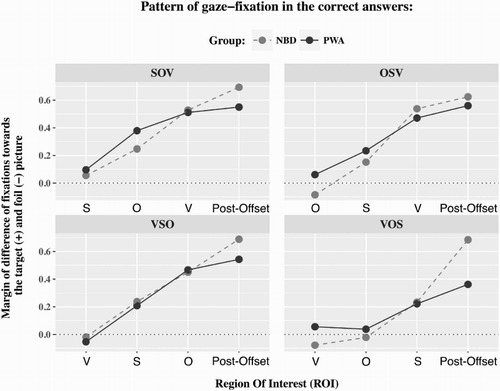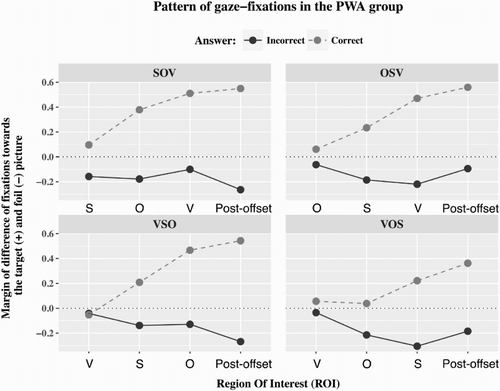Figures & data
Figure 1. Sample visual display. Target stimulus (SOV): “Arbitroak atezaina bultzatu du” (The referee has pushed the goalkeeper). (A) Target picture; (B) foil.

Table 1. Comprehension accuracy and standard error (SE) as a function of group and sentence condition.
Table 2. Comparison of response accuracy between groups across sentence conditions.
Table 3. Comprehension accuracy differences between sentence conditions in PWA and NBD groups.
Figure 2. Log transformed RTs as a function of group, sentence condition and correctness of the response.

Table 4. Mean RT and SE as function of group and sentence condition.
Table 5. RT differences between groups across sentence condition.
Table 6. RT differences between sentence conditions in PWA and NBD groups.
Table 7. Trial number effect on the RT across sentence conditions in PWA and NBD groups.
Table 8. Hypothesis-driven model. RT differences between groups across sentence conditions.
Table 9. Hypothesis-driven model. PWA and NBD groups: RT differences between sentence conditions.
Table 10. Hypothesis-driven model. PWA group: RT differences between correct and incorrect responses.
Figure 3. Gaze-fixation patterns across the visual stimuli during the auditory presentation of the sentence. Between-group comparison in the correct answers.

Table 11. Comparison of proportion of gaze fixations between verb-final (SOV and OSV) and verb-initial (VSO and VOS) conditions across ROIs, in correctly answered trials in NBD group.
Table 12. Comparison of proportion of gaze fixations between verb-final (SOV and OSV) and verb-initial (VSO and VOS) conditions across ROIs, in correctly answered trials in PWA group.
Table 13. Comparison of proportion of gaze fixations between verb-final (SOV and OSV) and verb-initial (VSO and VOS) conditions across ROIs, in incorrectly answered trials in PWA group.
Table 14. Comparison of the linear predictor of gaze-fixation data with zero in each sentence condition and ROI in both NBD and PWA groups.
Table 15. Between-group comparison of the gaze fixations patterns in the correct answers as a function of ROI and sentence conditions.
Figure 4. Gaze-fixation pattern across the visual stimuli during the auditory presentation of the sentence. Comparison between the correct and incorrect answers in the PWA group.

